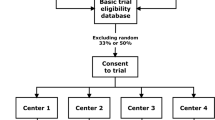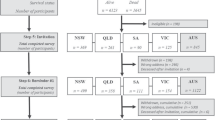Abstract
Study design:
Focus Group.
Objectives:
To develop a unified, regional spinal cord injury (SCI) research strategy for Australia and New Zealand.
Setting:
Australia.
Methods:
A 1-day structured stakeholder dialogue was convened in 2013 in Melbourne, Australia, by the National Trauma Research Institute in collaboration with the SCI Network of Australia and New Zealand. Twenty-three experts participated, representing local and international research, clinical, consumer, advocacy, government policy and funding perspectives. Preparatory work synthesised evidence and articulated draft principles and options as a starting point for discussion.
Results:
A regional SCI research strategy was proposed, whose objectives can be summarised under four themes. (1) Collaborative networks and strategic partnerships to increase efficiency, reduce duplication, build capacity and optimise research funding. (2) Research priority setting and coordination to manage competing studies. (3) Mechanisms for greater consumer engagement in research. (4) Resources and infrastructure to further develop SCI data registries, evaluate research translation and assess alignment of research strategy with stakeholder interests. These are consistent with contemporary international SCI research strategy development activities.
Conclusion:
This first step in a regional SCI research strategy has articulated objectives for further development by the wider SCI research community. The initiative has also reinforced the importance of coordinated, collective action in optimising outcomes following SCI.
Similar content being viewed by others
Log in or create a free account to read this content
Gain free access to this article, as well as selected content from this journal and more on nature.com
or
References
Barrable B . Model for bridging the translational ‘valleys of death’ in spinal cord injury research. J Healthc Leadersh 2014; 6: 15–27.
Tator CH . Review of treatment trials in human spinal cord injury: issues, difficulties, and recommendations. Neurosurgery 2006; 59: 957–982.
Steward O, Popovich PG, Dietrich WD, Kleitman N . Replication and reproducibility in spinal cord injury research. Exp Neurol 2012; 233: 597–605.
Lemmon VP, Ferguson AR, Popovich PG, Xu XM, Snow DM, Igarashi M et al. Minimum information about a spinal cord injury experiment: a proposed reporting standard for spinal cord injury experiments. J Neurotrauma 2014; 31: 1354–1361.
Kwon BK, Soril LJ, Bacon M, Beattie MS, Blesch A, Bresnahan JC et al. Demonstrating efficacy in preclinical studies of cellular therapies for spinal cord injury - how much is enough? Exp Neurol 2013; 248: 299–300.
Dvorak MF, Noonan VK, Fallah N, Fisher CG, Rivers CS, Ahn H et al. Minimizing errors in acute traumatic spinal cord injury trials by acknowledging the heterogeneity of spinal cord anatomy and injury severity: an observational Canadian cohort analysis. J Neurotrauma 2014; 31: 1540–1547.
Bragge P, Piccenna L, Middleton J, Williams S, Creasey G, Dunlop S et al. Developing a spinal cord injury research strategy using a structured process of evidence review and stakeholder dialogue. Part I: rapid review of SCI prioritisation literature. Spinal Cord, (e-pub ahead of print 23 June 2015; doi: 10.1038/sc.201585).
Bragge P, Piccenna L, Middleton J, Williams S, Creasey G, Dunlop S et al. Developing a spinal cord injury research strategy using a structured process of evidence review and stakeholder dialogue. Part II: background to a research strategy. Spinal Cord, (e-pub ahead of print 23 June 2015; doi:10.1038/sc.201586).
Lavis JN . How can we support the use of systematic reviews in policymaking? PLoS Med 2009; 6: e1000141.
Lavis JN, Posada FB, Haines A, Osei E . Use of research to inform public policymaking. Lancet 2004; 364: 1615–1621.
Cooke NJ, Salas E, Kiekel PA, Bell B. Advances in measuring team cognition In: Salas E, Fiore S (eds). Team Cognition: Understanding the Factors That Drive Process and Performance. American Psychological Association: Washington, DC: Washington, DC. 2004 pp 83–106.
Chatham House: The Royal Institute of International Affairs. Chatham House Rule 2014 (cited 10 November 2014). Available from http://www.chathamhouse.org/about/chatham-house-rule.
Moat KA, Lavis JN, Clancy SJ, El-Jardali F, Pantoja T, Knowledge Translation Platform Evaluation study team. Evidence briefs and deliberative dialogues: perceptions and intentions to act on what was learnt. Bull World Health Organ 2014; 92: 20–28.
Australian and New Zealand Intensive Care Society. Clinical Trials Group 2014. Available from http://www.anzics.com.au/Pages/CTG/CTG-home.aspx.
Halpern SD, Karlawish JH, Berlin JA . The continuing unethical conduct of underpowered clinical trials. JAMA 2002; 288: 358–362.
Boninger ML, Brienza D, Charlifue S, Chen YY, Curley KC, Graves DE et al. State of the Science Conference in Spinal Cord Injury Rehabilitation 2011: introduction. Spinal Cord 2012; 50: 342–343.
Heinemann AW, Steeves JD, Boninger M, Groah S, Sherwood AM . State of the Science in Spinal Cord Injury Rehabilitation 2011: informing a new research agenda. Spinal Cord 2012; 50: 390–397.
Creasey G, McKenna S, Soril L, Samos C, Beekhuis G. A Roadmap for Spinal Cord Injury: The Stanford Symposium on Regeneration, Repair and Restoration of Function After Spinal Cord Injury 2012: Stanford School of Medicine.
Adams M, Carlstedt T, Cavanagh J, Lemon RN, McKernan R, Priestley JV et al. International spinal research trust research strategy. III: A discussion document. Spinal Cord 2007; 45: 2–14.
Curt A . The translational dialogue in spinal cord injury research. Spinal Cord 2012; 50: 352–357.
Sibbald SL, Singer PA, Upshur R, Martin DK . Priority setting: what constitutes success? A conceptual framework for successful priority setting. BMC Health Serv Res 2009; 9: 43.
Viergever RF, Olifson S, Ghaffar A, Terry RF . A checklist for health research priority setting: nine common themes of good practice. Health Res Policy Syst 2010; 8: 36.
Bragge P, Clavisi O, Turner T, Tavender E, Collie A, Gruen RL . The global evidence mapping initiative: scoping research in broad topic areas. BMC Med Res Methodol 2011; 11: 92.
Kwon BK, Okon EB, Tsai E, Beattie MS, Bresnahan JC, Magnuson DK et al. A grading system to evaluate objectively the strength of pre-clinical data of acute neuroprotective therapies for clinical translation in spinal cord injury. J Neurotrauma 2011; 28: 1525–1543.
Guest J, Harrop JS, Aarabi B, Grossman RG, Fawcett JW, Fehlings MG et al. Optimization of the decision-making process for the selection of therapeutics to undergo clinical testing for spinal cord injury in the North American Clinical Trials Network. J Neurosurg Spine 2012; 17: 94–101.
Simpson LA, Eng JJ, Hsieh JT, Wolfe DL . The health and life priorities of individuals with spinal cord injury: a systematic review. J Neurotrauma 2012; 29: 1548–1555.
Bourke J, Snell D, Sinnott K, Cassidy B . A user-led consultation model: making inclusion of service users in research a reality. Ethn Inequal Health Soc Care 2012; 5: 61–69.
Heinemann A. Developing quality metrics from patient-reported outcomes for medical rehabilitation: Patient-Centered Outcomes Research Institute, 2014 (cited 10 November 2014). Available from http://www.pcori.org/research-results/2013/developing-quality-metrics-patient-reported-outcomes-medical-rehabilitation.
Chapman AR, Scala CC . Evaluating the first-in-human clinical trial of a human embryonic stem cell-based therapy. Kennedy Inst Ethics J 2012; 22: 243–261.
Eaton ML, Kwon BK, Scott CT . Money and morals: ending clinical trials for financial reasons. Current topics in behavioral neurosciences 2015; 19: 297–315.
Scott CT, Magnus D . Wrongful termination: lessons from the geron Clinical Trial. Stem Cells Transl Med 2014; 3: 1398–1401.
Acknowledgements
We thank the following: Professor Alan Mackay-Sim, Griffith University, Queensland, Australia; Peter Murray, Spinal Cord Injuries Australia; Peter Trethewey, AQA Victoria; Australia; Susan P Howley, Christopher & Dana Reeve Foundation, USA; John A Bourke and Dr K Anne Sinnott Jerram, Burwood Academy of Independent Living and University of Otago, New Zealand. This project was funded by the Victorian Transport Accident Commission and the Spinal Cord Injury Network of Australia and New Zealand.
Author information
Authors and Affiliations
Corresponding author
Ethics declarations
Competing interests
Medical research funding organisations were represented in the dialogue from which this manuscript was developed. David Berlowitz received competitive research grants from the Transport Accident Commission (TAC) directly and from the Institute for Safety, Compensation and Recovery Research (ISCRR). His organisation (Institute for Breathing and Sleep) has also received such grants.
Rights and permissions
About this article
Cite this article
Middleton, J., Piccenna, L., Lindsay Gruen, R. et al. Developing a spinal cord injury research strategy using a structured process of evidence review and stakeholder dialogue. Part III: outcomes. Spinal Cord 53, 729–737 (2015). https://doi.org/10.1038/sc.2015.87
Received:
Revised:
Accepted:
Published:
Issue date:
DOI: https://doi.org/10.1038/sc.2015.87
This article is cited by
-
Research priorities to enhance life for people with spinal cord injury: a Swedish priority setting partnership
Spinal Cord (2023)
-
Approaches to prioritising research for clinical trial networks: a scoping review
Trials (2022)
-
Ambulances are for emergencies: shifting attitudes through a research-informed behaviour change campaign
Health Research Policy and Systems (2019)
-
Work and SCI: a pilot randomized controlled study of an online resource for job-seekers with spinal cord dysfunction
Spinal Cord (2019)
-
It is a marathon rather than a sprint: an initial exploration of unmet needs and support preferences of caregivers of children with SCI
Spinal Cord (2018)



